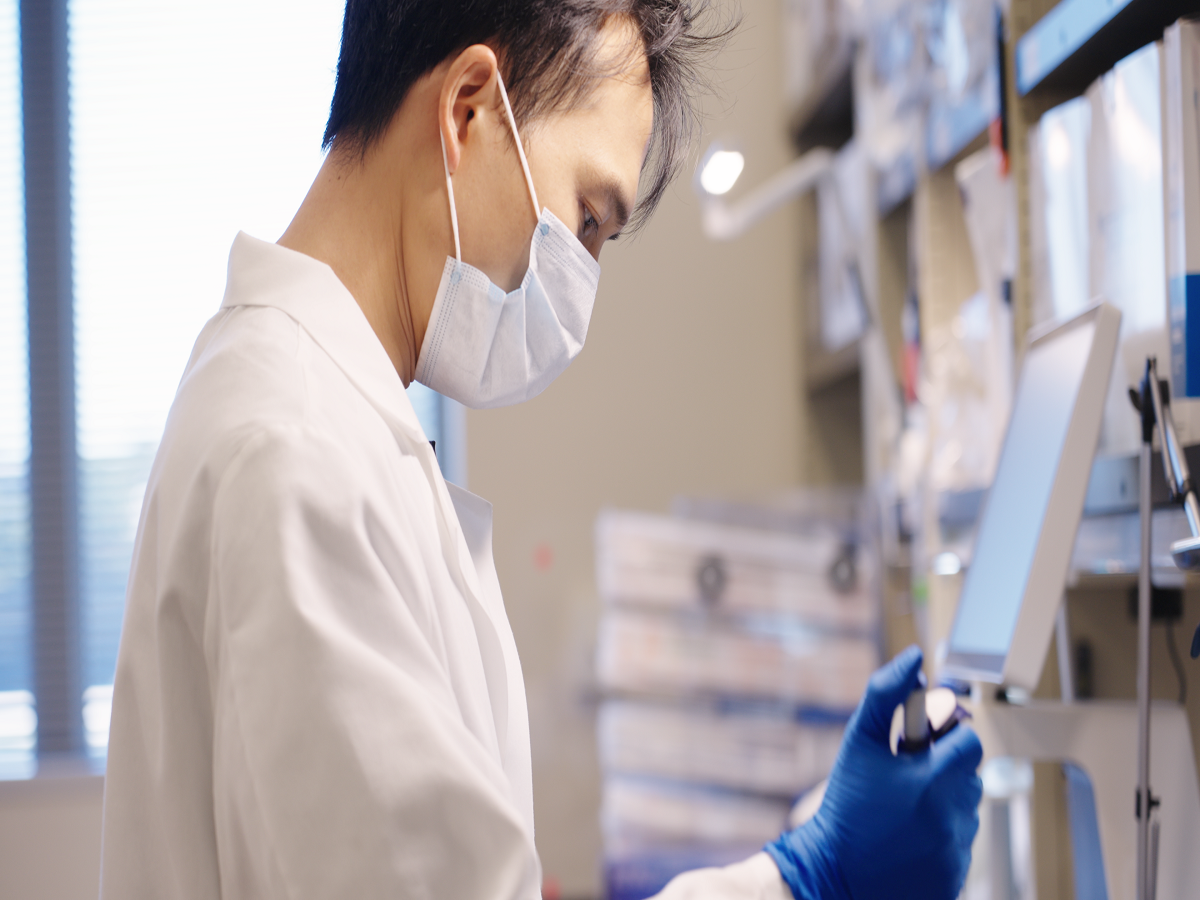Penn State researchers have developed the first protein-based nano-computing agent that can be used as a circuit. The accomplishment brings them one step closer to developing next-generation cell-based therapies for diseases including diabetes and cancer.
 Jiaxing Chen, a bioinformatics and genomics doctoral student at Penn State College of Medicine and Penn State Huck Institutes of the Life Sciences, is part of the Penn State research team to create the first protein-based nano-computing agent that functions as a circuit. Image Credit: Penn State Huck Institutes of the Life Sciences/Penn State.
Jiaxing Chen, a bioinformatics and genomics doctoral student at Penn State College of Medicine and Penn State Huck Institutes of the Life Sciences, is part of the Penn State research team to create the first protein-based nano-computing agent that functions as a circuit. Image Credit: Penn State Huck Institutes of the Life Sciences/Penn State.
Traditional synthetic biology strategies for cell-based therapies, such as annihilating cancer cells or promoting tissue regeneration after injury, rely on the production or inhibition of proteins that execute a desired action within a cell.
This process demands cellular energy and takes time (for proteins to be expressed and destroyed). Penn State College of Medicine and Huck Institutes of the Life Sciences researchers are attempting a novel technique.
We’re engineering proteins that directly produce a desired action. Our protein-based devices or nano-computing agents respond directly to stimuli (inputs) and then produce a desired action (outputs).”
Nikolay Dokholyan, G. Thomas Passananti Professor and Vice Chair, Department of Pharmacology, Pennsylvania State University
Dokholyan and bioinformatics and genomics Doctoral Student Jiaxing Chen outline their strategy for constructing their nano-computing agent in Science Advances on May 26th, 2023. They constructed a target protein by fusing two sensor domains, or protein sections that respond to stimuli. The target protein in this scenario modifies its orientation, or position in space, in response to light and the drug rapamycin.
The researchers put their discovery to the test by introducing their modified protein into live cells in culture. They used equipment to assess changes in cellular orientation after exposing cultured cells to sensor domain stimuli.
Previously, their nano-computing agent required two inputs to produce one output. Chen currently asserts that there are two possible outputs and that the output is controlled by the order in which the inputs are received.
If the cell detects rapamycin first, then light, it will adopt one orientation angle; however, if the stimuli are detected in reverse order, the cell will adopt a different orientation angle. According to Chen, this experimental proof-of-concept paves the road for the development of more complex nano-computing agents.
Theoretically, the more inputs you embed into a nano-computing agent, the more potential outcomes that could result from different combinations. Potential inputs could include physical or chemical stimuli and outputs could include changes in cellular behaviors, such as cell direction, migration, modifying gene expression, and immune cell cytotoxicity against cancer cells.”
Jiaxing Chen, Pennsylvania State University
The researchers plan to develop their nano-computing agents and experiment with various applications of the technology. Dokholyan, a Penn State Cancer Institute and Penn State Neuroscience Institute researcher, believes this idea could lay the groundwork for next-generation cell-based therapies for disorders such as viral infections, autoimmune diseases, nerve injury, diabetes, and cancer.
Source:
Journal reference:
Jiaxing Chen, Yashavantha L. Vishweshwaraiah, Richard B. Mailman, Erdem D. Tabdanov, Nikolay V. Dokholyan. (2023) A noncommutative combinatorial protein logic circuit controls cell orientation in nanoenvironments. Science Advances, 9 (21) DOI: 10.1126/sciadv.adg1062